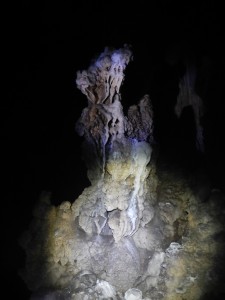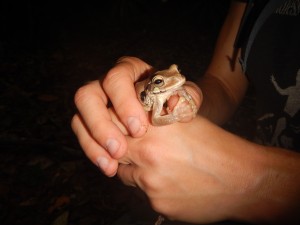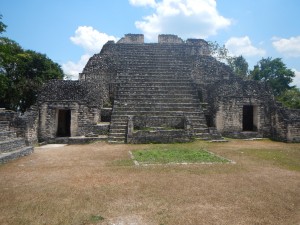Life in the canopy is very different from life on the forest floor. There are differences in water, sunlight, vegetation, other organisms, the affects of gravity and access to food and nutrition. Nitrogen is an important nutrient and decomposers on the forest floor are essential parts of the nitrogen cycle. With this in mind we hypothesized that the forest floor would be more nitrogen rich than the canopy. Specifically, that arthropods in the canopy are more nitrogen limited. We tested this using pitfall traps both in the trees and in the ground. We used control traps filled with water and traps full of nitrogen-rich liquid (our own urine). Tomorrow when we collect the traps we expect to find more arthropods in the urine filled traps, and more arthropods in the tree traps than the ground traps.
This afternoon we went spelunking in a cave at Las Cuevas that was used as a ceremonial chamber by the ancient Mayans. The Mayans believed that caves were entrances to the underworld and that at the end of the day the sun turned into a jaguar and entered hell through a cave to battle demons all night until it reached the other side. This cave had nine bottlenecks that represented the nine layers of a hell a Mayan hero fought through in their mythology. We belly-crawled through the mud-guano cave floor to several hard to reach spots. There are many Mayan artifacts in the cave and areas are still being excavated by archaeologists. We found a lot of pottery, but also a human femur and an animal skeleton. Most excitingly, we saw wrinkle-faced bats roosting. Other animal sightings included glow worms and whip scorpions. Of course the formations are almost alive themselves, with huge chambers swallowing you up.
I have been searching for amphibians in damp areas like the cave entrance and inside bromeliads but I haven’t had any luck today. The leaf litter can also shelter cryptic amphibians, like toads, but I haven’t found any so far.

Sophia Streeter
5/21






